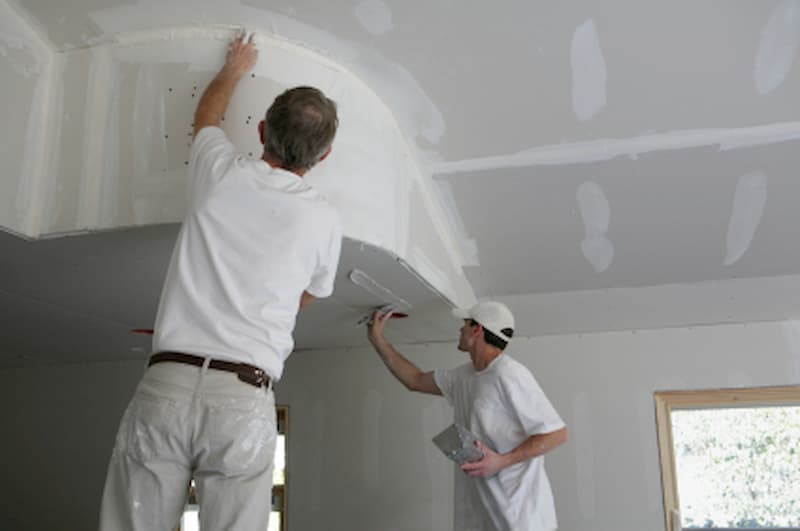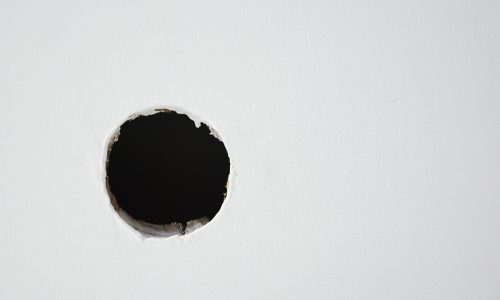A Comprehensive Guide to Mastering Drywall Fixing and Installation
This overview uses a comprehensive expedition of drywall fixing and installation, providing to both newbies and seasoned experts. It lays out vital devices, methods for patching and hanging sheets, and the vital ending up processes. Drywall Installation Ogden Utah. By comprehending usual pitfalls, individuals can accomplish refined outcomes. Mastering these skills not only enhances one's home but additionally develops confidence in DIY undertakings. What foundational ideas will assure a successful job from beginning to end?
Essential Tools for Drywall Repair Work and Setup
When beginning on drywall fixing and setup, a few essential tools can greatly improve the performance and quality of the job. A drywall blade, usually readily available in numerous sizes, is vital for using joint compound and smoothing joints. A taping knife is also required for feathering sides and ensuring a seamless finish. In addition, a drywall saw or energy knife enables accurate cutting of drywall sheets to fit any type of room.

Step-by-Step Guide to Patching Holes
Patching openings in drywall is a straightforward process that can bring back the wall surface's look and integrity. To begin, the area around the hole must be cleaned and any loose particles eliminated. For small holes, a simple spackle or joint substance can be applied with a putty blade. Larger openings may call for a patch; an item of drywall can be cut to fit the hole, protected with glue or screws, and afterwards taped around the sides. As soon as the patch is in area, joint substance is applied over the spot and feathered out to mix with the surrounding wall surface. After the compound dries out, fining sand is essential to achieve a smooth finish. The repaired area can be keyed and repainted to match the rest of the wall surface. This approach guarantees a seamless fixing, enhancing the total look of the drywall and maintaining its architectural integrity.
Methods for Hanging Drywall Sheets
After efficiently fixing holes in drywall, the following action involves hanging brand-new drywall sheets to develop a smooth surface area. To attain this, one must begin by gauging the wall area accurately and cutting the drywall sheets to fit. It is vital to hang the sheets flat for far better architectural stability, beginning with the top and working downwards.
Making use of a drywall lift can streamline the procedure, especially for ceiling setups. As soon as placed, securing the sheets with drywall screws at intervals of concerning 12 inches along the edges and 16 inches in the field is necessary. This guarantees a firm hold and reduces the threat of drooping. For corners, the sheets ought to be reduced to fit comfortably, enabling cleaner seams. It is suggested to surprise the joints between sheets to reinforce the total structure, creating a more long lasting coating prepared for the next phase in the drywall setup procedure.
Ending Up Touches: Taping and Mudding
Finishing the drywall installment entails the crucial steps of mudding and taping, which assure a smooth and sleek surface. Insulation calls for the application of joint tape over the seams between drywall sheets. drywall contractor. This tape can be either paper or fiberglass harmonize, with each kind offering distinct benefits. After taping, the following action is mudding, where joint substance, or "mud," is related to cover the tape and load any kind of blemishes
Using a drywall blade, the compound ought to be spread uniformly, guaranteeing a feathered edge to lessen noticeable modifications. Several coats are commonly essential, with sanding in between each layer to attain a seamless surface. Careful focus during this procedure is essential, as it greatly affects the last look of the wall surface. With the right technique and patience, completion outcome will be a perfect structure ready for paint or completing touches.
Typical Mistakes to Avoid in Drywall Projects

Another usual mistake is not enabling adequate drying time in between coats, which can trap dampness and jeopardize the coating. Moreover, neglecting to feather the edges correctly can produce visible lines and blemishes. Ultimately, avoiding sanding or making use of improper methods might leave harsh spots. By understanding these mistakes, individuals can significantly boost the top quality of their drywall jobs and achieve a professional-looking surface.
Regularly Asked Questions
Can I Repair Drywall Without Expert Help?
Yes, one can fix drywall without specialist aid. With the right tools, materials, and guidance, individuals can effectively take care of minor repair work. Substantial damages might call for professional competence for perfect outcomes and resilience.
How Much Time Does Drywall Compound Require To Dry?
Drywall compound typically takes between 24 to two days to completely dry completely, depending on elements such as humidity and temperature level. Thinner layers might dry out faster, while thicker applications call for more time for suitable results.
What's the very best Sort Of Paint for Drywall?
The most effective kind of paint for drywall is normally a click here water-based latex paint. It supplies excellent protection, toughness, and convenience of application, making it suitable for interior wall surfaces while permitting for simple clean-up with soap and water.

Exactly how Do I Prevent Mold And Mildew on Drywall?
To stop mold on drywall, warranty proper ventilation, control moisture degrees, utilize mold-resistant products, and promptly address any type of leakages. Normal examinations and immediate removal of water damages are likewise necessary for lasting prevention.
Is Drywall Recyclable After Removal?
Drywall is recyclable after removal, offered it is devoid of contaminants like mold, paint, or various other unsafe products. Recycling facilities can refine it right into new products, advertising sustainability and decreasing garbage dump waste in building.
When starting on drywall fixing and setup, a couple of important tools can greatly enhance the performance and quality of the work. After effectively repairing openings in drywall, the next step includes hanging new drywall sheets to develop a smooth surface. Finishing the drywall setup includes the vital steps of taping and mudding, which guarantee a smooth and sleek coating. Attaining a refined surface in drywall tasks can be difficult, and numerous typical mistakes can threaten the quality of the work. Yes, one can repair drywall without professional help.